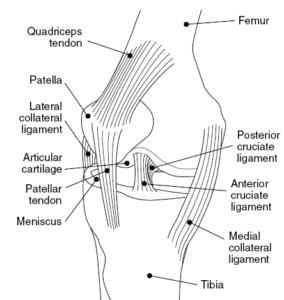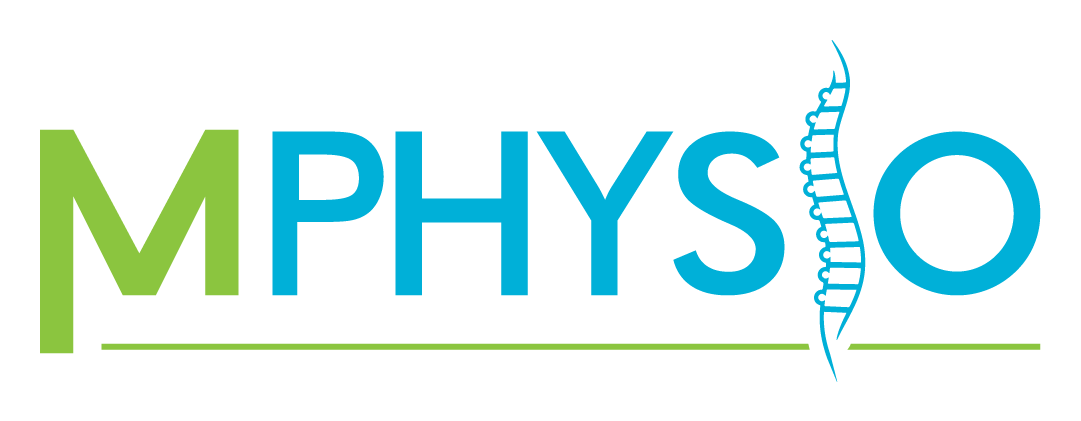Blog
Ligaments of the Knee

Ligaments connect bone to bone, and are helpful for joint stabilisation and proprioception. The knee joint has four main ligaments:
-
- Anterior Cruciate Ligament (ACL)
- Posterior Cruciate Ligament (PCL)
- Medial Collateral Ligament (MCL)
- Lateral Collateral Ligament (LCL)
Anterior Cruciate Ligament
The ACL is one of the most common ligaments to injure, and is the second most common knee injury. It is inside the joint and is put under most strain when rotating or changing direction. An ACL tear or rupture is commonly a sporting injury from sports such as netball, football, basketball, and soccer; where by the foot is in contact with the ground and the knee is forced forward or inwards. Females and those with family members who have had an ACL injury are more at risk than the rest of the population.
Whilst ligament tears are graded from 1-3, with 1 and 2 being partial tears and 3 being complete tears. The most common ACL injury is a complete rupture (grade 3). There may be a noise at the time of injury, followed by instability of the knee, and the level of pain significantly varies from person to person. Some people may even be able to return to play immediately after injury but will experience subsequent swelling, pain and feelings of giving way.
Physiotherapists are heavily involved in rehabilitation from ACL injuries, particularly as there is more evidence to show that conservative management in some cases is just as effective as surgical management. In fact, if the patient has no plans to return to very high level sport, the recommendation is to undergo conservative management only. Those who chose to have surgery should still undergo a 6-8 week “prehab” program to have best post-operative outcomes. Treatment focuses on muscle strengthening and normalising movements to compensate for the loss of a contributing stabiliser. Consistent re-assessment by a physiotherapist will help to determine long-term outcomes.
Posterior Cruciate Ligament
PCL injuries are not anywhere near as common as ACL or MCL injuries, but can occur when the knee is forced backwards or there is a fall onto a bent knee. These types of injuries are often associated with injuries of the cartilage or meniscus. Physiotherapy is also highly regarded in the management plan of PCL recovery, and surgery is only considered when multiple structures of the knee are injured. PCL injuries are more commonly partial and therefore tend to heal on their own. The PCL rehabilitation program will also include strengthening exercises and bracing.
Medial and Lateral Collateral Ligaments
MCL tears and ruptures are another common sporting injury, seen in isolation and concurrent with ACL injuries. They commonly occur during a tackle or an awkward landing where by the lower half of the leg is forced outward, putting the ligament on strain. The severity of the tear depends on the mechanism of injury.
Physiotherapists are the best mode of treatment for MCL injuries regardless of the grade, and is highly recommended over surgery. Rehabilitation will be similar to that of an ACL injury, but time frame for recovery is less (6 weeks). Return to sport is almost always achieved. Taping can be used to aid return to sport and prevent recurrence of injury.
LCL tears and sprains are the least frequent knee ligament injury due to the direction of force required to place the ligament under strain. They can occur when the knee is hyperextended and forced inwards or with severe blunt force trauma. Similar to the other injuries, they are generally managed conservatively, the time to return to sport will depend on the severity of the tear and adherence to treatment plans.
Overall, with all knee ligament injuries, physiotherapists play a huge role in maximising stability of the joint, and readying the patient to return to sport and other functional activities pain free with little risk of recurrence. If treatment plans are followed, and patients are diligent with maintaining continuous strengthening, long term effects should be absolutely minimal!
-
-
-
-
-
-
-
-
- Are you or do you know someone suffering from knee pain, contact us via:
-
-
-
-
-
-
-
???? on 1800 992 999 or ???? at [email protected]
to book an appointment with one of our physiotherapists today for careful assessment and diagnosis!
References:
APA. 2019. Choose physio for ligament injuries. Retrieved from: https://choose.physio/your-body/knee/ligament-injuries
American Academy of Orthopaedic Surgeons. 2014. Common Knee Injuries. Retrieved from: https://orthoinfo.aaos.org/en/diseases–conditions/common-knee-injuries/
